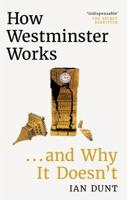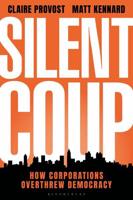Publisher's Synopsis
This report examines the historical development and contemporary role of congressional Member organizations (CMOs) in the House and informal Member groups in both the House and the Senate. It discusses the differences between CMOs (which register with the Committee on House Administration) and informal Member groups (which do not register with the Committee on House Administration) and the reasons Members form these groups (often referred to as caucuses). The report also presents the rise and fall of legislative service organizations (LSOs), the House's decision in 1995 to issue regulations for establishing CMOs and governing their behavior, and the subsequent regulation of CMOs in the House by the Committee on House Oversight/Committee on House Administration. It provides a step-by-step guide for House Members and staff who might be interested in forming a CMO. Many of the steps in the guide may be of interest to Senators and their staff who are considering forming an informal Member group in the Senate. CMOs exist to affect public policy, either directly through policy advocacy for a region or an issue, or indirectly by attracting media attention, or through the socialization and orientation of their Members. Nearly all CMOs serve as forums for the exchange of information. Many hold regular Member or staff meetings, typically weekly, monthly, or quarterly depending on the legislative calendar, to exchange information and develop legislative strategy. Many CMOs also invite outside speakers and groups to make presentations to the CMO's members. There are seven types of CMOs: (1) intraparty CMOs promote the policy views of like-minded Members within a political party; (2) personal interest CMOs (the most prevalent type) typically focus on a broad, single concern, such as the environment or children, that is often under the jurisdiction of more than one committee; (3) industry CMOs advocate the interests of a particular industry; (4) regional CMOs champion the interests of a particular region; (5) state/district CMOs advocate the interests of a particular state or district; (6) national constituency CMOs advocate the interests of particular constituencies, such as women, minorities, and veterans; and (7) diplomacy CMOs concern themselves with improving foreign relations with another country or region of the world. In recent years, the number of CMOs and informal Member organizations has increased, more than doubling from the 108th Congress (350) to the 113th Congress (739). This increase has taken place even though House Members can no longer provide CMOs and informal Member groups congressional office space; use the congressional frank or lend them money to support their activities; use their Member Representational Allowance to directly support them as an independent entity; or accept goods, funds, or services from private organizations or individuals to support their activities. Despite the limitations imposed on the options available to House Members to support informal Member organizations, CMOs and, to a somewhat lesser extent given their ad-hoc nature, informal Member groups, have retained an important role in the congressional policymaking process. Their influence has endured largely because many Members continue to consider their participation in informal Member groups and CMOs as advantageous in achieving their primary goals of policy advocacy, reelection, and power within the institution.










